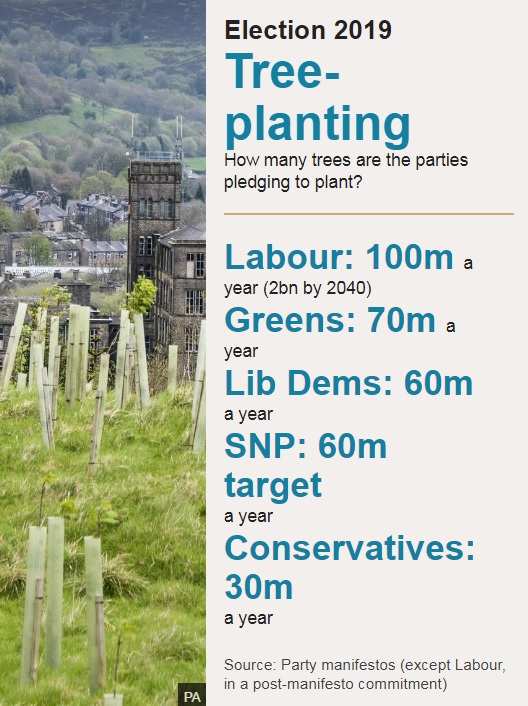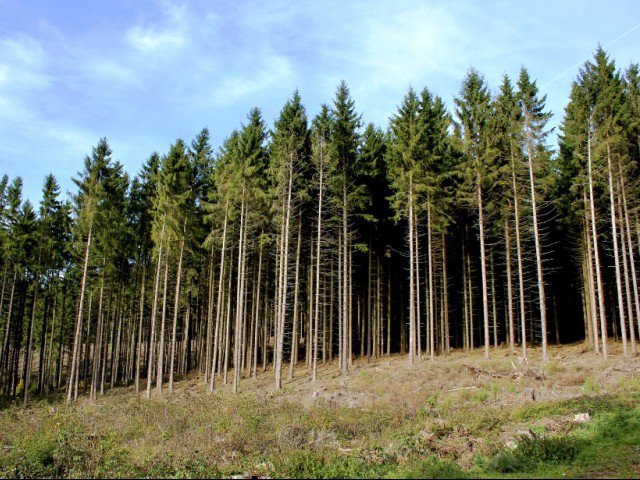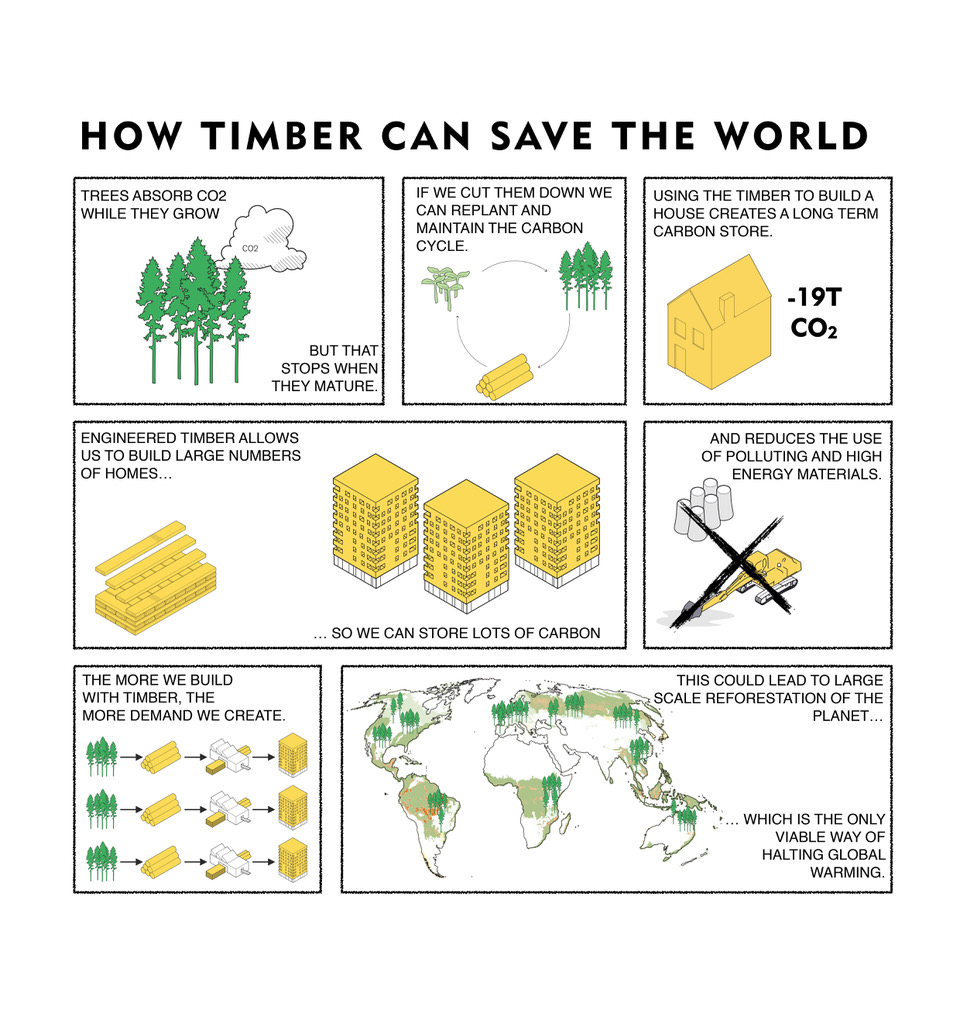1/ O.k, so after the #ClimateDebate you'll be hearing a lot about ambitious proposals for #treeplanting as means of sucking - sequestrating - carbon dioxide from the atmosphere to help get to #netzero emissions. Here's the good, the bad, and the ugly of it...
2/ First, the good. Yay, trees! We love your carbon-munching, street cooling, insect-loving super powers. Especially in Hackney, where we recently announced the largest mature street and parks tree planting programme in the country (& lots more to come)! https://news.hackney.gov.uk/5000-new-street-trees-to-be-planted-in-hackney/
3/ So, it's genuinely heartening to see all mainstream political parties - and Labour, in particular - placing tree planting high up their list of priorities. https://www.bbc.co.uk/news/election-2019-50578207
4/ Now the bad news! Numbers, numbers everywhere! While talking tree numbers is a good way of making manifesto pledges 'real' for the public, they don't really tell the story of nature-based carbon sequestration. This shows that none of the Parties are doing the hard thinking.
5/ Talking purely in terms of tree numbers is looking at the issue from the wrong end of the telescope. In Hackney, we revisited and overhauled our 2018 Manifesto pledge based on what we wanted to achieve - locked-in carbon, calmer and cooler streets, and increased biodiversity.
6/ In particular, I've been heavily influenced by this fantastic piece of work from @carlyziter & others (who says academics never change anything?), which focuses on the relationship between canopy cover, depaving, and urban temperatures... https://www.pnas.org/content/116/15/7575
7/ So, rather than put an arbitrary number against the street trees we'll plant in Hackney, we're working towards a minimum of 40% canopy cover, beyond which we know we can significantly reduce temperatures and therefore pressure on medical services and energy demand for cooling.
8/ Once we knew what level of canopy cover we wanted to achieve on-street, we sat down and costed it. Mature trees - the kind we plant with care on-street - are expensive. There's labour costs, root directors, caging, staking, after-care...
9/ We realised that, to get to 40% canopy cover on-street, we'd need to invest circa £9m. When you consider that Hackney's annual Gov't grant has been cut by £140m since 2010, that's a big commitment; the kind of commitment made by people who take the #climateemergency seriously.
10/ Then we decided what we could afford to invest this term, which is why we've committed to deliver 30% ten year canopy cover by 2022, with 40% cover achieved by 2024. As we currently have 20% canopy cover from 10k street trees, we know we'll to deliver a further 5000 by 2022.
11/ This all sounds a bit tedious, I know, but it matters. Why? 1 - because it allows us to tell the public a credible story about where our numbers come from, and 2 - because we know it will work to deliver what we want. Evidenced-based policy-making in action.
12/ The eagle-eyed amongst you may have wondered why, if we're investing £3.8m in the first tranche of 5000 street trees, we are investing £5.2m in the second phase? Simple, because phase #2 requires additional physical changes to the public highway. Why does this matter?
13/ It matters because it illustrates that strategic planting is a lot more than plonking trees in the ground. It requires investment in land acquisition and engagement with land-owners and farmers. Politicians need to reassure the public that they're thinking about the details.
14/ How can national parties - particularly Labour, from my perspective - go about adopting 'the Hackney model' of planning, financing, & planting trees? An excellent place to start would be the @royalsociety & @RAEngNews report on greenhouse gas removal... https://royalsociety.org/topics-policy/projects/greenhouse-gas-removal/
15/ As you can see, @royalsociety and @RAEngNews paper on greenhouse gas removal doesn't talk about tree planting in numbers. Instead, takes a science-based approach to determining how land-use and nature-based approaches can contribute to achieving net zero.
16/ In doing so, the report concludes that we need to reforest 1.2m hectares - an area about the size of Yorkshire. Seems a lot, right? Wrong. Yes, it would mean increasing forest cover in the U.K by 40%, but only 13% of the U.K is forested, down from 90% in the neolithic period.
17/ So, despite @JustinOnWeb's incredulity in response to
@johnmcdonnellMP's tree planting pledges on
@BBCr4today, it is both necessary and, crucially, possible to plant 2 billion trees in the U.K (this is around 30% more ambitious than the @royalsociety @RAEngNews proposals).
@johnmcdonnellMP's tree planting pledges on
@BBCr4today, it is both necessary and, crucially, possible to plant 2 billion trees in the U.K (this is around 30% more ambitious than the @royalsociety @RAEngNews proposals).
19/ Now for the ugly. While I concur with @GeorgeMonbiot's enthusiasm for natural reforestation and re-wilding, I do so with a couple of qualifications. https://www.theguardian.com/commentisfree/2019/sep/25/rewilding-britains-rainforest-planting-trees
20/ First, natural forests take a long time to grow. One of the things you may have noticed is that *we don't have time*. So, while I love and support the concept of rewilding, we also need to to plant for FAST timber growth and reforestation... https://www.theguardian.com/environment/blog/video/2013/may/30/rewilding-animation-george-monbiot-video
21/ So, the ugly truth - if you have a view of forests as places of abundant beauty - is that we also need a LOT of industrial-scale commercial forestry that looks a bit like this (which is still pretty attractive, in my view)...
22/ While people may balk at the idea of commercial foresty, it's also one of the best mechanisms for both increasing forest cover ( @andyheald is the man on this) and providing raw materials for timber construction. And what is construction-grade timber, I hear you ask?
23/ Construction grade timber is, on the one hand, a wonder material, both strong in compression and tension, and on the other a permanent, useful store of carbon dioxide, since around 70% of timber is locked-in CO2! Why does this matter?
24/ Because, by providing an increasing proportion of the materials that comprise our built environment from sustainably-forested, domestically-sourced timber, we can help eliminate carbon-intensive concrete and steel, provide a permanent store of carbon, and drive reforestation!
25/ ...but, don't just take it from me, listen to all-round timber design & construction genius Andrew Waugh of Hackney-based @WaughThistleton talk about the ability of timber to reduce both embedded *and* operational emissions in the built environment: http://waughthistleton.com/news/18/02/05/AW-economist/
26/ So there it is. The good, the bad, and the ugly of the tree planting pledges being made during #GE2019!
P.S I'm available for birthdays, weddings and bar mitzvahs...
P.S I'm available for birthdays, weddings and bar mitzvahs...

 Read on Twitter
Read on Twitter




